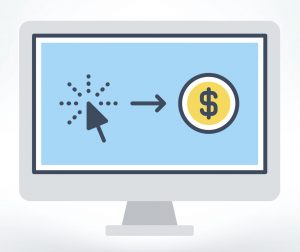Using Data To Reach The Multicultural Shopper
by Holly Pavlika , Columnist, October 19, 2017
Over the next few years, the retail landscape will change in some very fundamental ways. None of these changes will be bigger than the impact felt from the rise of the multicultural shopper.
Multicultural Americans now number more than 120 million and—perhaps more importantly—make up the fastest growing segment of the U.S. population. In fact, according to the U.S. Census Bureau, multi-cultural Americans made up a staggering 92% of the population growth between 2000 and 2014.
This group’s size alone makes it a force to be reckoned with in the promotions industry, and savvy brands and retailers are beginning to take note. To effectively reach these multicultural shoppers, it is imperative to first understand how this group shops, how they seek out promotions and how they engage with the stores they frequent.
This is where data analytics come into play. By understanding their customer base, brands and retailers can design their promotional offers to attract these shoppers to their product or store.
The one-size-fits-all methodology just does not work anymore. Audience findings of a recent survey our team conducted have helped better define multicultural shoppers, their shopping preferences and the influences that most affect those preferences.
For the study, a total of 1,245 randomly selected shoppers were asked to complete a 20-minute online survey. To be selected, these shoppers had to be U.S. residents, at least 18 years old, not involved in the grocery or market research industries, and be the primary or shared decision-maker in the household.
Of the respondents, 22% identified themselves as Hispanic, 21% identified themselves as Asian and 21% identified themselves as African-American. The study asked open-ended questions to capture how respondents shop, how children and pets influence their purchase decisions, and how respondents engage with e-commerce, social media, promotions and loyalty programs.
We used a cluster algorithm to design the study, which enabled them to group the resulting data into clusters or groups in which multiple variables are in concert with each other. This grouping allows for easy comparing and contrasting of the different shopper dynamics of each group. This allowed the data to provide a customer profile and how it should be grouped.
To make the results easier to understand, we assigned profiles to each of these clusters based on characters from the popular sitcom The Office:
- Aging Caucasians—Phyllis and Bob, who are married and love pets
- Successful Asians—Kelly, who has a combination of parents, children and grandparents living together
- Young Hispanics—Oscar, who has a growing household
- African-Americans—Darryl, who does not own a pet
According to the study, the Oscar cluster is the most likely to shop for groceries online, a feature increasingly offered at retailers. This cluster generally had positive attitudes about online shopping and store pickup methods, finding these options more convenient and faster than traditional methods. In fact, 24% in this cluster admitted that they will try online delivery methods for their next grocery trip, which is triple the likelihood of the Phyllis and Bob cluster.
The study also revealed how these different clusters engage with social media and how those interactions impact their shopping behavior. The older Phyllis and Bob cluster is far less likely to search for coupons on social media. The Oscar cluster, in contrast, is very likely to search for both in-store and pre-shop promotions. This cluster seeks out coupons more than the other clusters and will also research recipes online and then seek out coupons before their shopping trip. Similarly, the Oscar cluster and Kelly cluster are most likely to read online product reviews and visit manufacturer websites to inform their pre-shop decision-making process.
Planning and children are also big factors in how these different clusters shop. The Phyllis and Bob cluster, for example, always plans its shopping trips ahead of time by creating a list, while the other clusters are far less likely to do so. Coupons available in the Sunday newspaper and store circulars are likely to influence this list, whereas the other clusters use mobile apps or other digital methods to seek out coupons.
Similarly, the Phyllis and Bob cluster does nearly half of their shopping (42.7%) for children or grandchildren, though they rarely bring them to the store during shopping trips (16.4%). The Oscar cluster also does a lot of shopping for children (39%), though they bring their children with them during shopping trips 43.1% of the time.
The data clearly show that shoppers not only want, but expect, personalization. Knowing the multicultural shopper and what he/she is looking for in promotional offers gets you much closer to meeting that expectation.
(74)
Report Post






